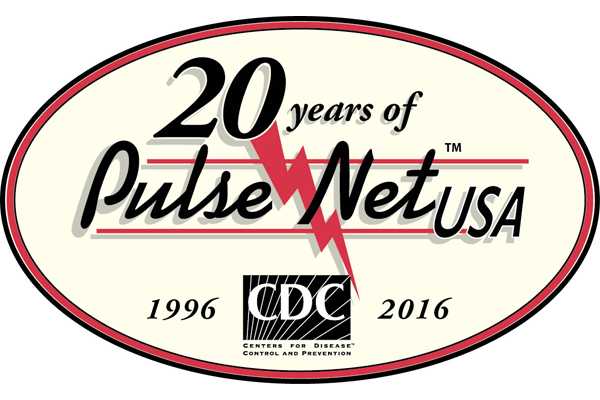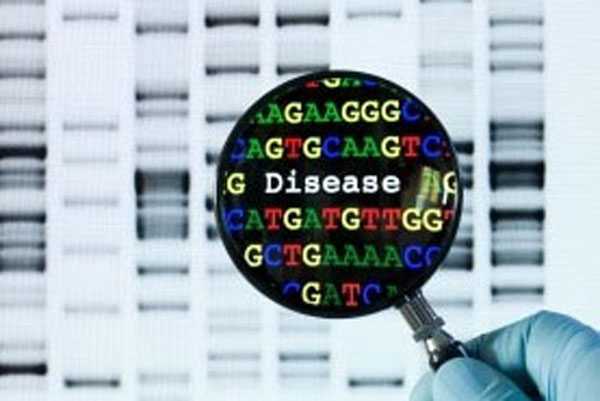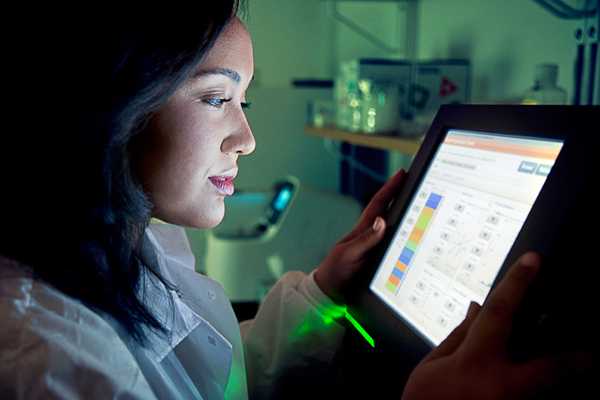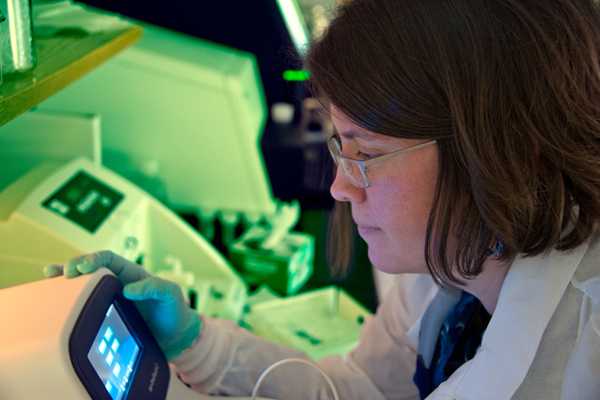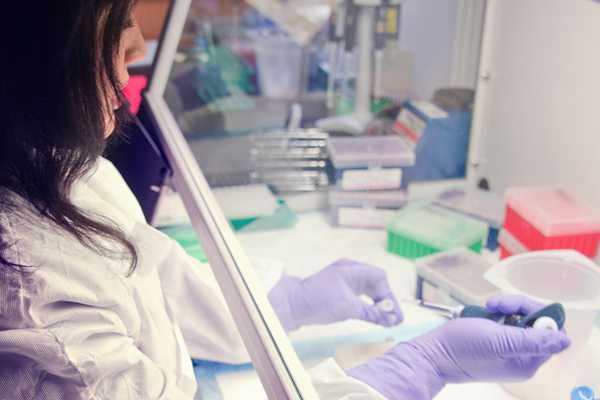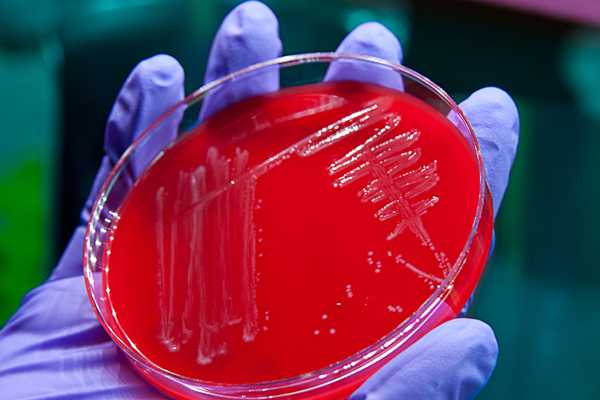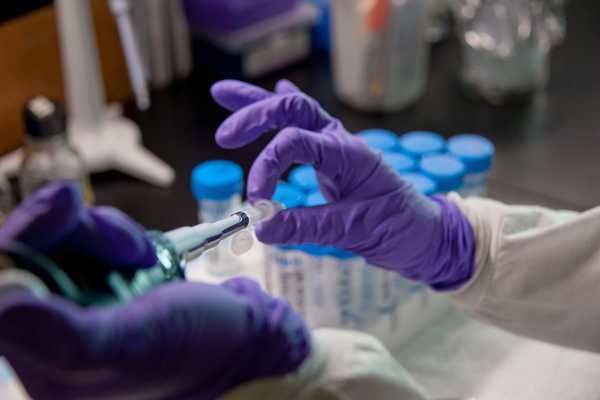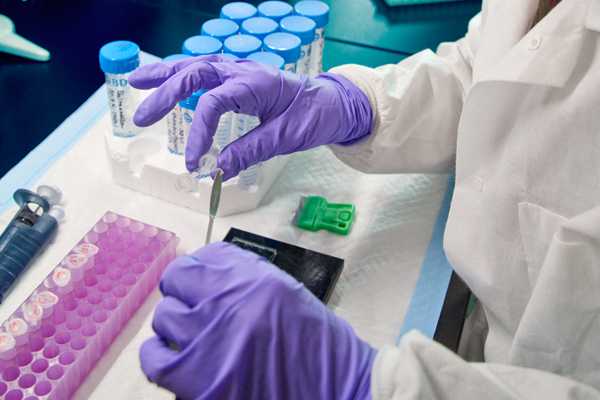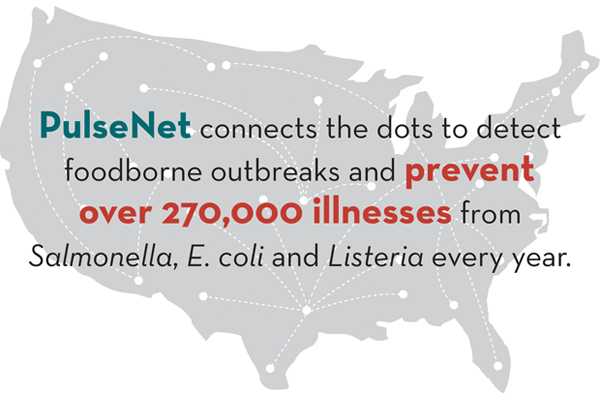PulseNet Saves Lives and Money: A 20-year Success Story
PulseNet, a national network of public health laboratories, prevents an estimated 270,000 cases of food poisoning and saves half a billion dollars every year.
By preventing foodborne illness, PulseNet not only saves lives but also saves an estimated $500 million a year in medical costs and lost productivity. In comparison, the network costs public health agencies about $7 million a year to run.
PulseNet connects cases of foodborne illness by comparing DNA fingerprints of the foodborne bacteria and matching illnesses across the country that may be from the same source. Information about the bacteria making people sick is entered by labs across the country into a network database, which can be accessed by local and state health officials. By matching cases of illness and finding outbreaks, public health investigators can work quickly to find the source of the illness, recall contaminated food, and prevent more illnesses.
Since it started in 1996, PulseNet has revolutionized how foodborne disease outbreaks are detected and investigated. Before PulseNet, foodborne disease outbreaks often went undetected or were discovered only after they grew very large. Using PulseNet methods, scientists can now find outbreaks even if only a few people are sick and they live in different parts of the country.
Many products and food handling practices are safer today because of investigations that PulseNet initiated, including production changes in the food industry and new or improved guidance, policy and regulations.
Contact Information
CDC Media Relations
(404) 639-3286
media@cdc.gov
Spokespersons
Rob Tauxe, MD, MPH
“We’re in the midst of an exciting time of technological change that will help stop more foodborne disease outbreaks and help keep people healthy. We’re working on methods that will make PulseNet faster, perhaps allowing patients to learn they’re part of an outbreak within a few days of getting sick.”
Rob Tauxe, MD, MPH – Director, Division of Foodborne, Waterborne, and Environmental Diseases
Peter Gerner-Smidt, MD, DMSc
“PulseNet has been a huge success made possible by strong collaboration with state public health labs, FDA, USDA, and the Association of Public Health Laboratories. Public health officials and health care providers are on the front lines, providing valuable information that makes PulseNet work.”
Peter Gerner-Smidt, MD, DMSc – Chief, Enteric Diseases Laboratory Branch
John Besser, PhD
“PulseNet is a key part of our food safety system, helping identify problems that can be fixed to improve the quality and safety of the food we eat. We’ve known PulseNet has been successful for many years, but now we have hard numbers to prove it.”
John Besser, PhD – Deputy Chief, Enteric Diseases Laboratory Branch
Related Links
Most Relevant
- Press Release: PulseNet saves lives and money by reducing foodborne illness: English | Spanish
- PulseNet webpage
- Economic Evaluation of PulseNet- American Journal of Preventive Medicine
CDC Related Links
- Page last reviewed: March 15, 2016
- Page last updated: March 15, 2016
- Content source:



 ShareCompartir
ShareCompartir
